Death Comes Darkly. No, not the detective novel, but in Pew fashion, through view of a Thermal Scope. I finally decided to upgrade to a thermal scope. I've wanted one for at least two, maybe three decades and finally decided it was time.
I didn't get the one I really wanted, which was a Proton FXG. That one was around $5-6K U.S. with all the accessories needed. Instead, I settled for one half that cost, with the only real downside the 384K resolution rather than 640K resolution. @galenkp you would want the higher resolution models for your common longer distances for sure.
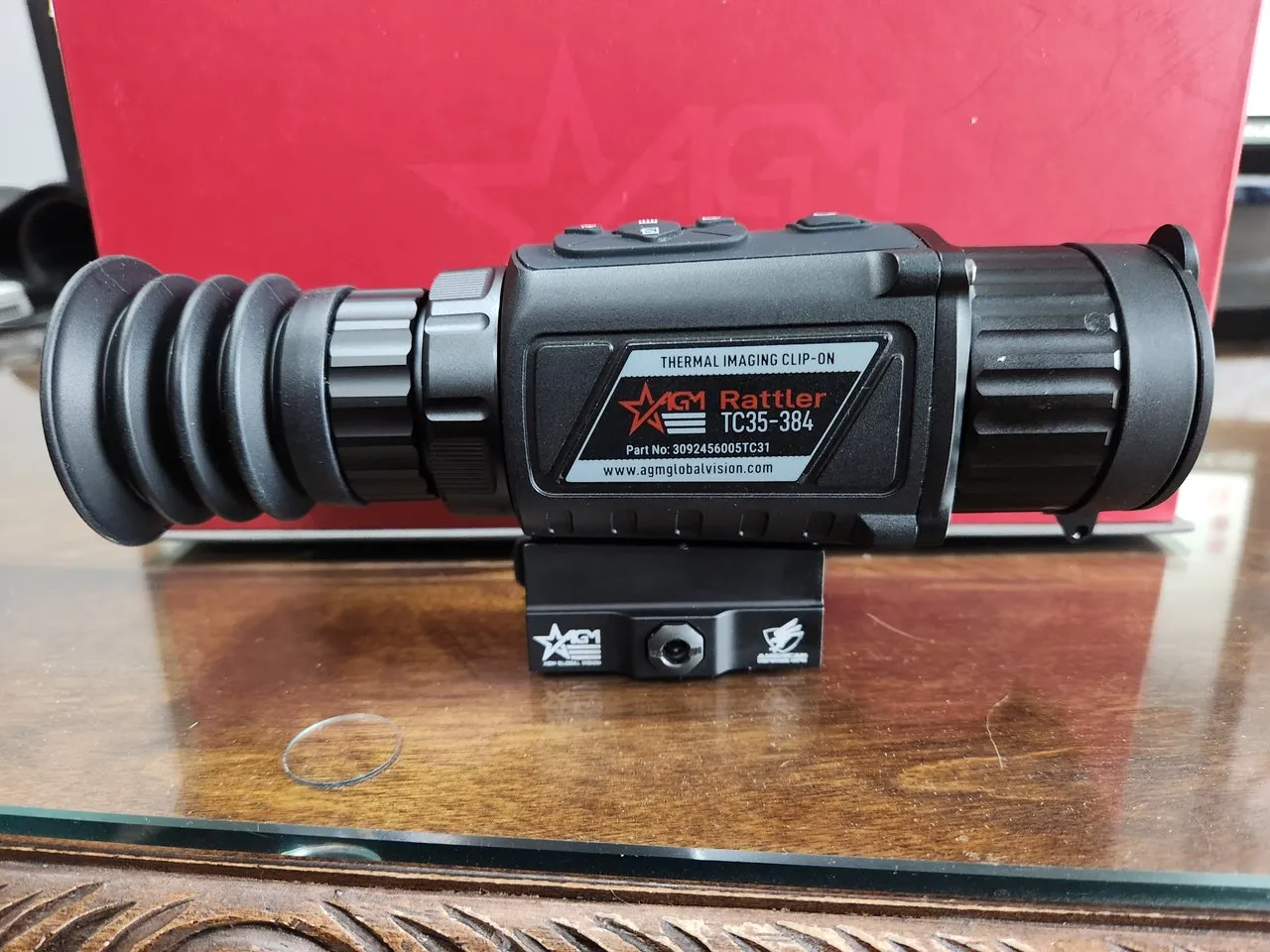
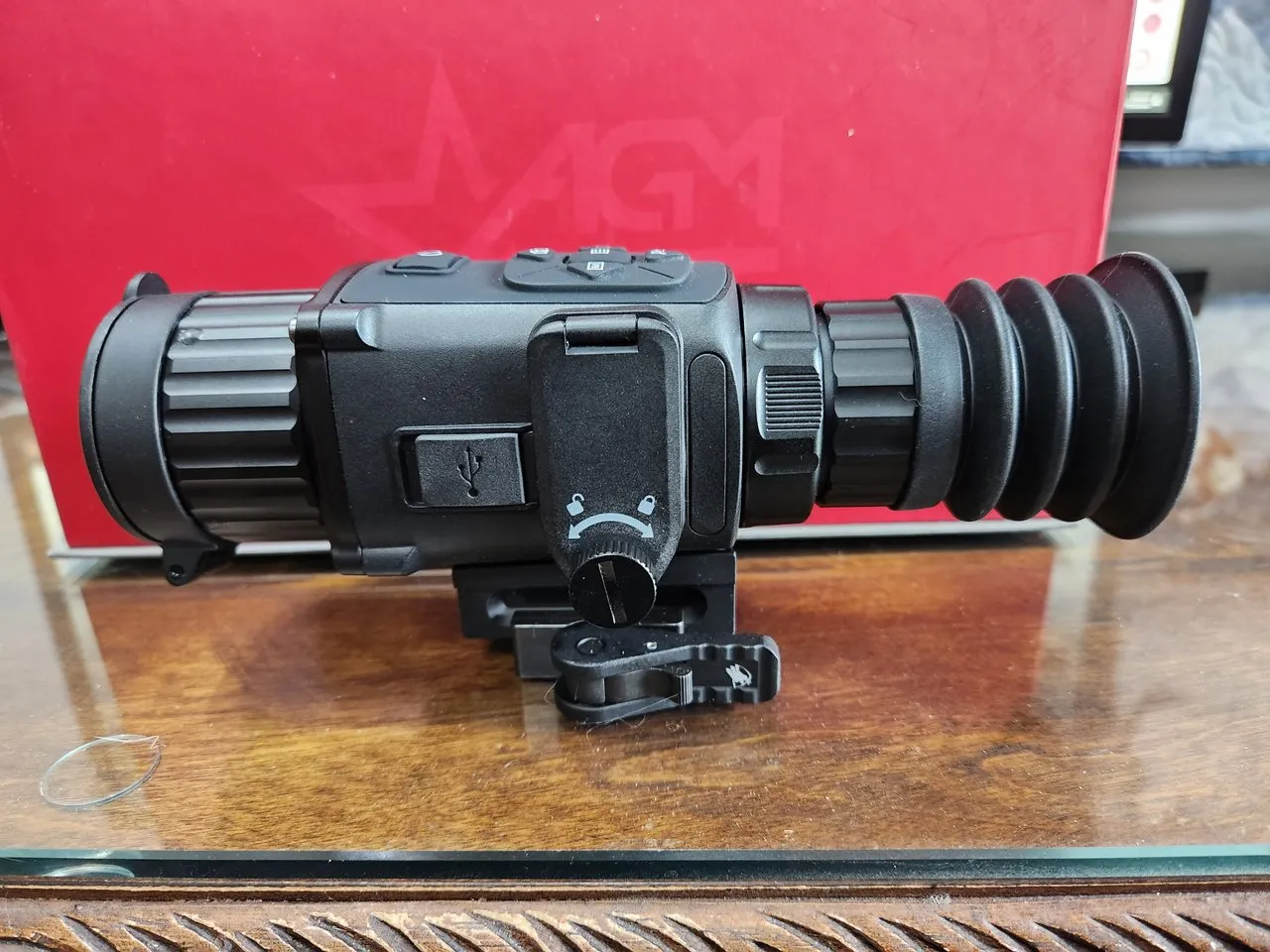
The One I chose is the AGM Rattler TC35-384, it's considered a step above entry level, but nowhere near the best on the market.
Specs are:
Resolution = 384x288
Detector = 17 m
Detection Range = 1,750m (1,450 yards)
Waterproof rating = IP67
Magnification (zoom) = 1-8x digital
Battery Life = 4.5 hours
Color Palettes = White Hot, Black Hot, Red Hot, Fusion
Built in Camera and Video Recording
Wireless broadcast to phone/tablet app.
Picture in Picture zoom (PIP)
Purchasing a night scope is a personal choice. People have differing wants and needs that some are more suited to than others. Most would agree that thermal beat night vision scopes (that require separate infrared light source) hands down. I do know some people that like night vision for hunting because of the way the infrared light makes animals eyes glow. That certainly makes them stand out if they are looking at you, but makes it harder to spot them if they are not. Also night vision cannot be used in the day. While some have day/night combination mode, the day mode is just a video view. Thermals work day or in the darkest of night, without any additional light source required.
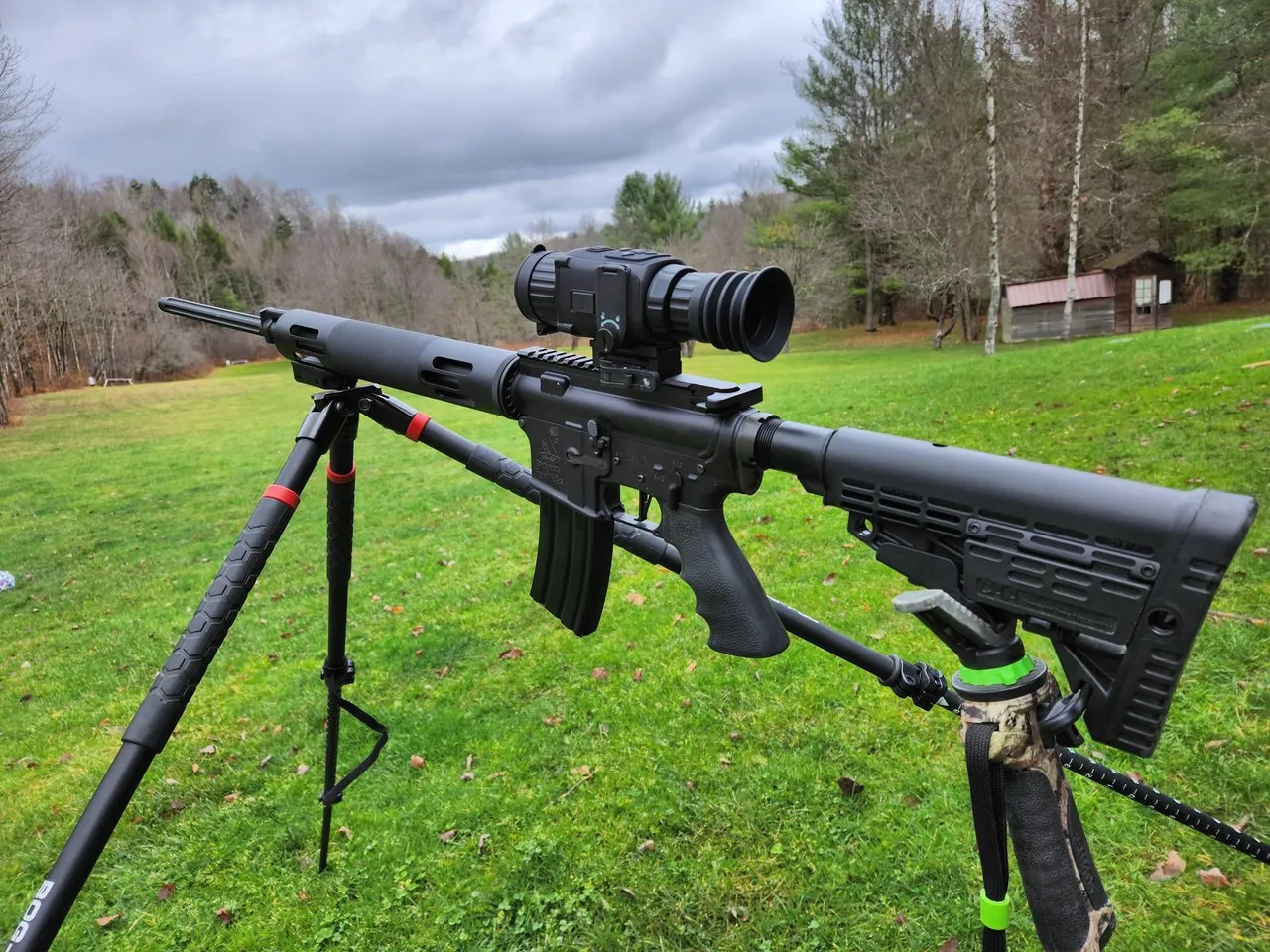
Here it is mounted as a standalone scope on my Bushmaster AR-15 .223 caliber platform, sitting atop a BogPod Tripod, a typical coyote hunting setup. The back section eyepiece comes off when using in conjunction with a normal glass scope and then uses same quick release mount, or slip-on scope mount directly to glass scope (with adapter).
My needs were rather simple, I wanted something for Coyotes and other vermin capable of accurate shots out to 200 yards or so. I wanted one that could be used as either a separate scope via a quick release mount, that could be used as a standalone monocular/scanner, or added as a clip-on to go in front of my variety of normal glass scopes and move around from my pellet rifles for shooting rats, rabbits, on up to larger rifles for coyotes, or even larger one for deer, bear, etc. We may get some chickens next year for our chicken house (in the picture above), and with that the racoons, fox, coyotes, etc. will be sure to visiting more.
Not to mention it's a great prepping tool, either to hunt nocturnal animals if we get a repeat lockdown/shutdown that turns worse, and we need to supplement what stores can't provide, or in the true SHTF prepper dream or invasion.
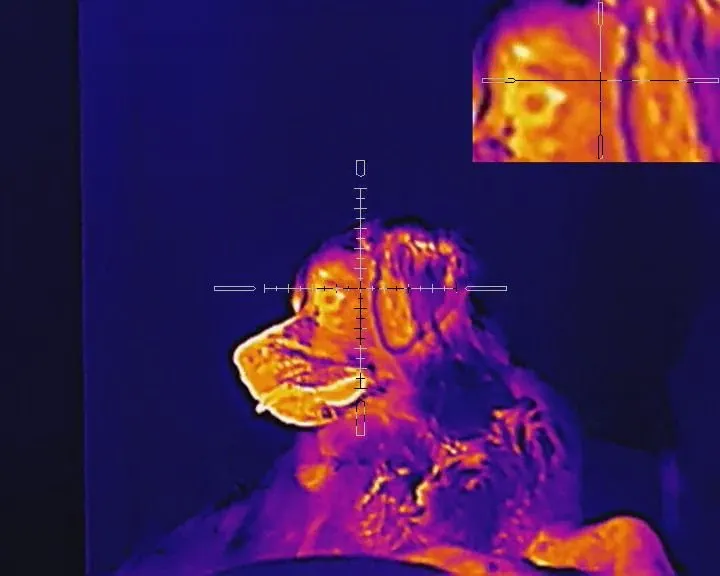
Don't worry, all photos were taken with the scope handheld, not mounted to a rifle or other firearm. No Betty's were harmed in the making of this post ;)
There are a variety of about 6 choices of different crosshair styles in the stand-alone scope mode. If using paired to a normal glass scope, those go away and you're using your normal crosshairs. This shot in the multi-color "Fusion" mode.
Thermals are an excellent addition for even daytime use, allowing one to more easily spot game typically camouflaged by their coloring, or even to use in tracking down wounded or dead game, as their blood trail and body will remain warm and visible for quite some time.
Depending on the game, you may even track footprints for a short time. While a man wearing thick socks and boots may not leave much trail, a barefoot person, or dog/coyote definitely will. Look here at these foot prints left by Betty, the bright pink ones are where she paused for 3-5 seconds, then the black splotches are her running up the stairs.
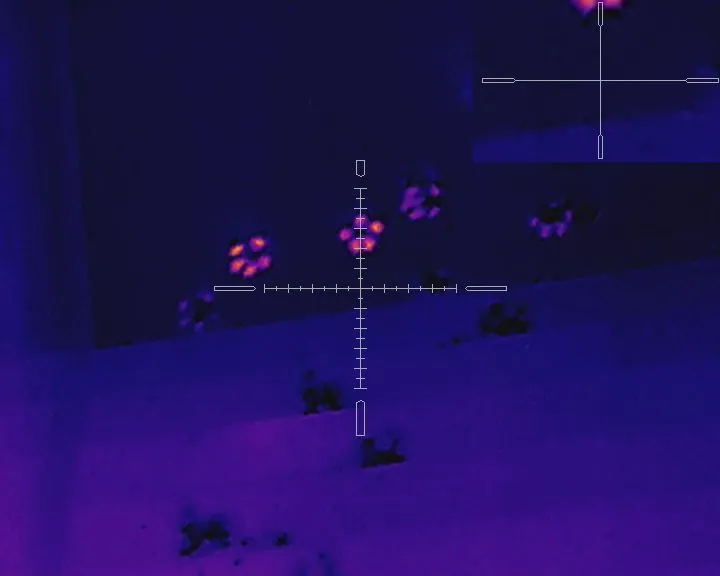
Many folks prefer a standard "white hot" view when hunting. It provides a lot of contrast and good motion detection. In the pic below, you can also see the picture in picture (PIP) display, which shows a zoomed in view of where ever the crosshairs are. It's quite a handy aiming aid when shooting at longer distances, a bit too close here. This shot only about 7 yards away.
I'll repeat. All photos were taken with the scope handheld, not mounted to a rifle or other firearm.
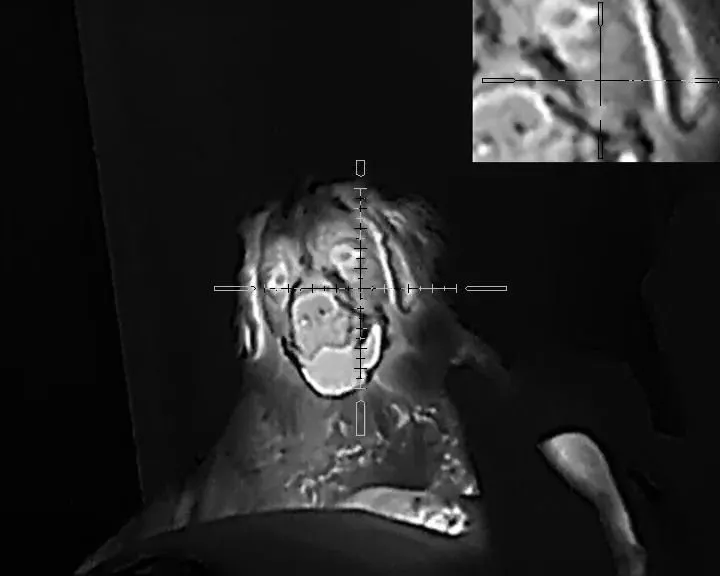
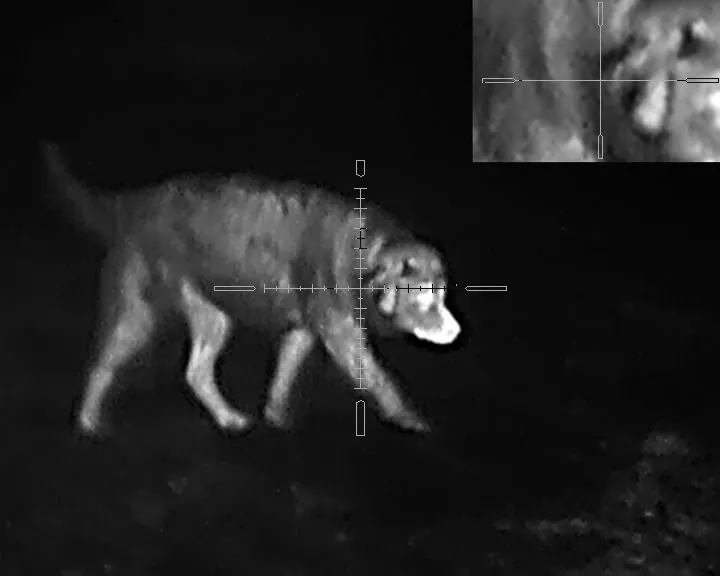
This shot from about 30 yards away. Really nice detail at this distance.
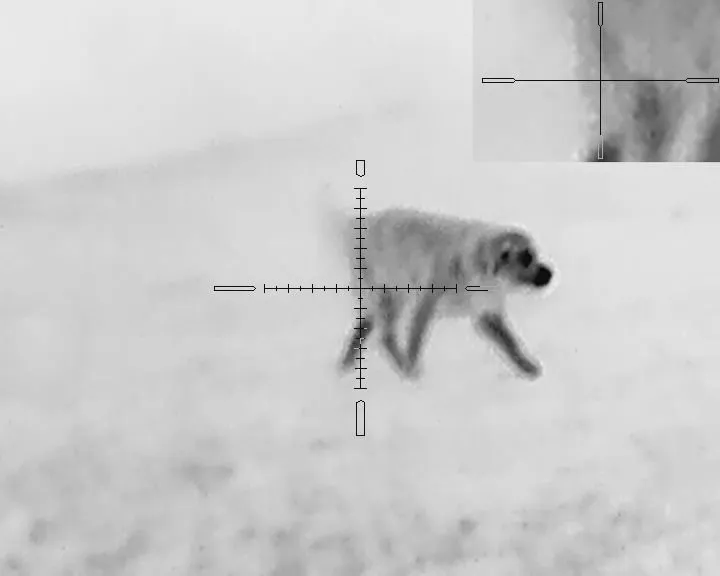
This one "Black Hot" mode from about 50 yards away while she trotting across the yard. Hard to hold steady and take the still pic button.

This is "Red Hot" mode. About 75 yards away, interesting depiction.
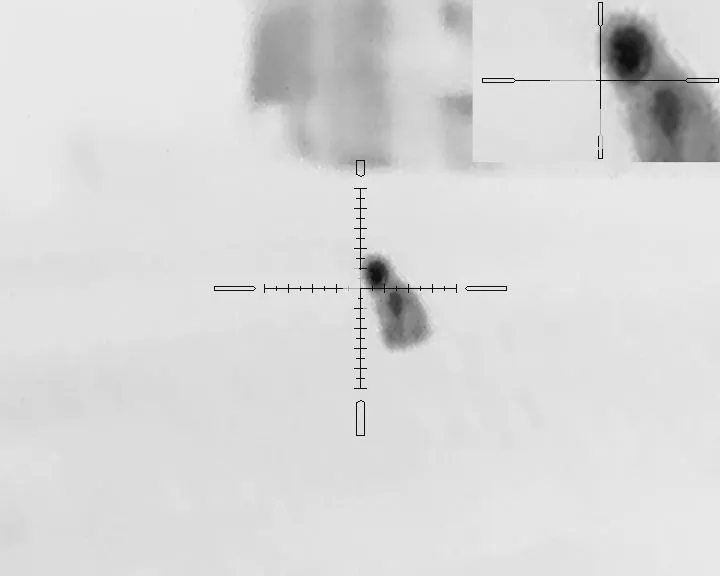
This one is about 125 yards away, in "black hot" mode. Note the pixelation and starting to lose detail. Note how useful the PIP mode can be at this distance to get/maintain an accurate placement. Also hard to get any real depth perception when using the thermal. Need to know your yardages.

This is "Fusion" mode at about 100 yards. Again note the usefulness of the PIP. I've watched lots of other folks using this in other videos and really liked it. Was on my "must have" feature list. It can be toggled on and off.
One of the other most useful features (and a must have) is the ability to connect via wireless to phone or tablet app for video stream. This is a shot of the picture sent to my cellphone (Samsung Fold4), which provides an outstanding way to view for scanning usage to prevent eye fatigue, or for others to see what you are seeing realtime in view.
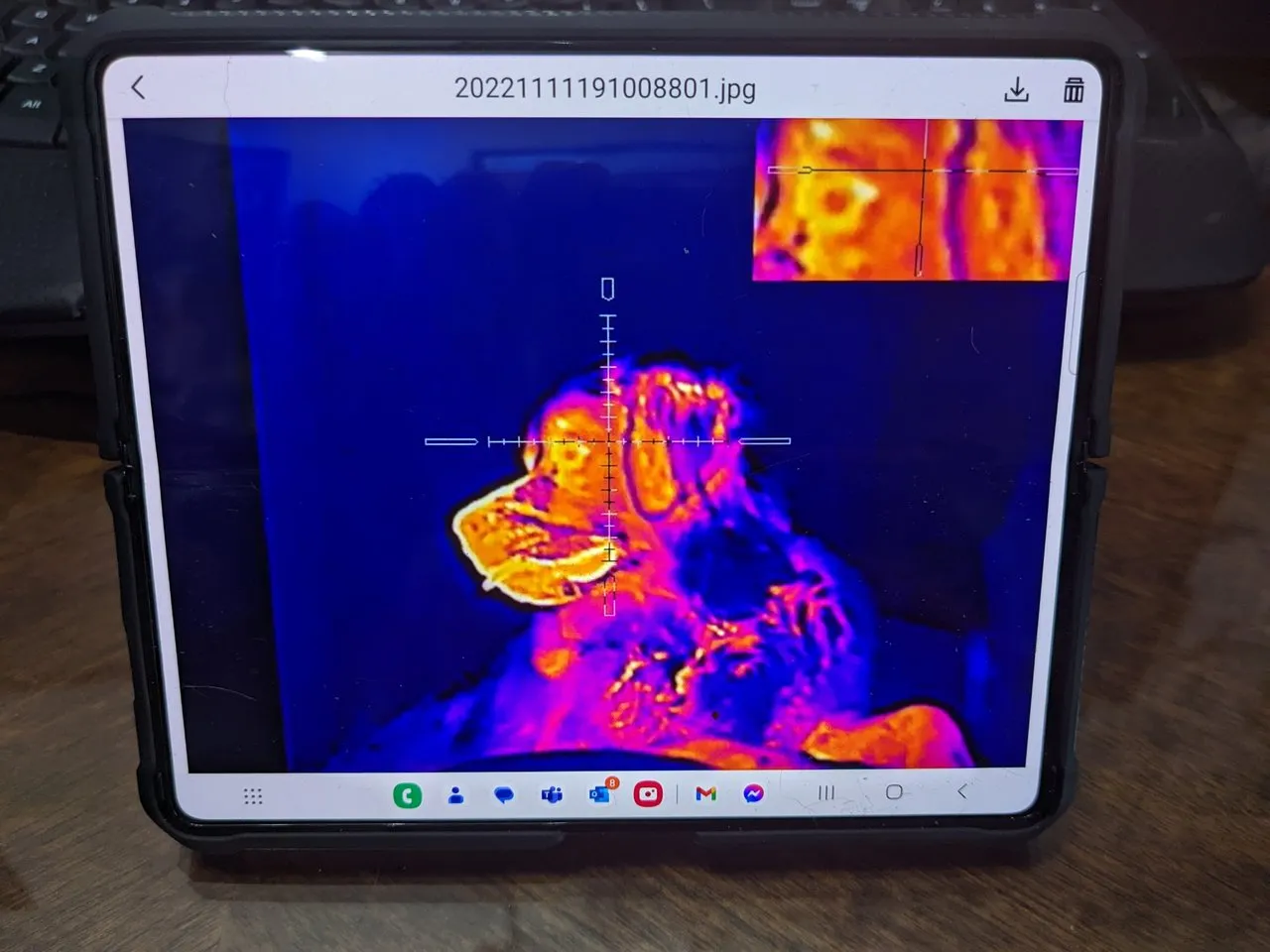
Here is a sample of video mode in action. Recorded with the built-in scope cam.
The video is about 30 yards for the white hot and about 75 yards for the Fusion hot portion.
While the stated detection range is listed as 1,750m (1,913 yards), the identification range (being able to tell similar size animals like a coyote from a wild pig for example) is probably more like 275 meters (250-300) yards for this scope. Other like coyote from deer (or kangaroo) maybe out to 450 meters or 500 yards. Plenty good for my purposes, but the higher resolution scopes can go much farther (for a price!)
And finally, it came in a nice box, with a very nice padded storage/carrying case with shoulder strap.
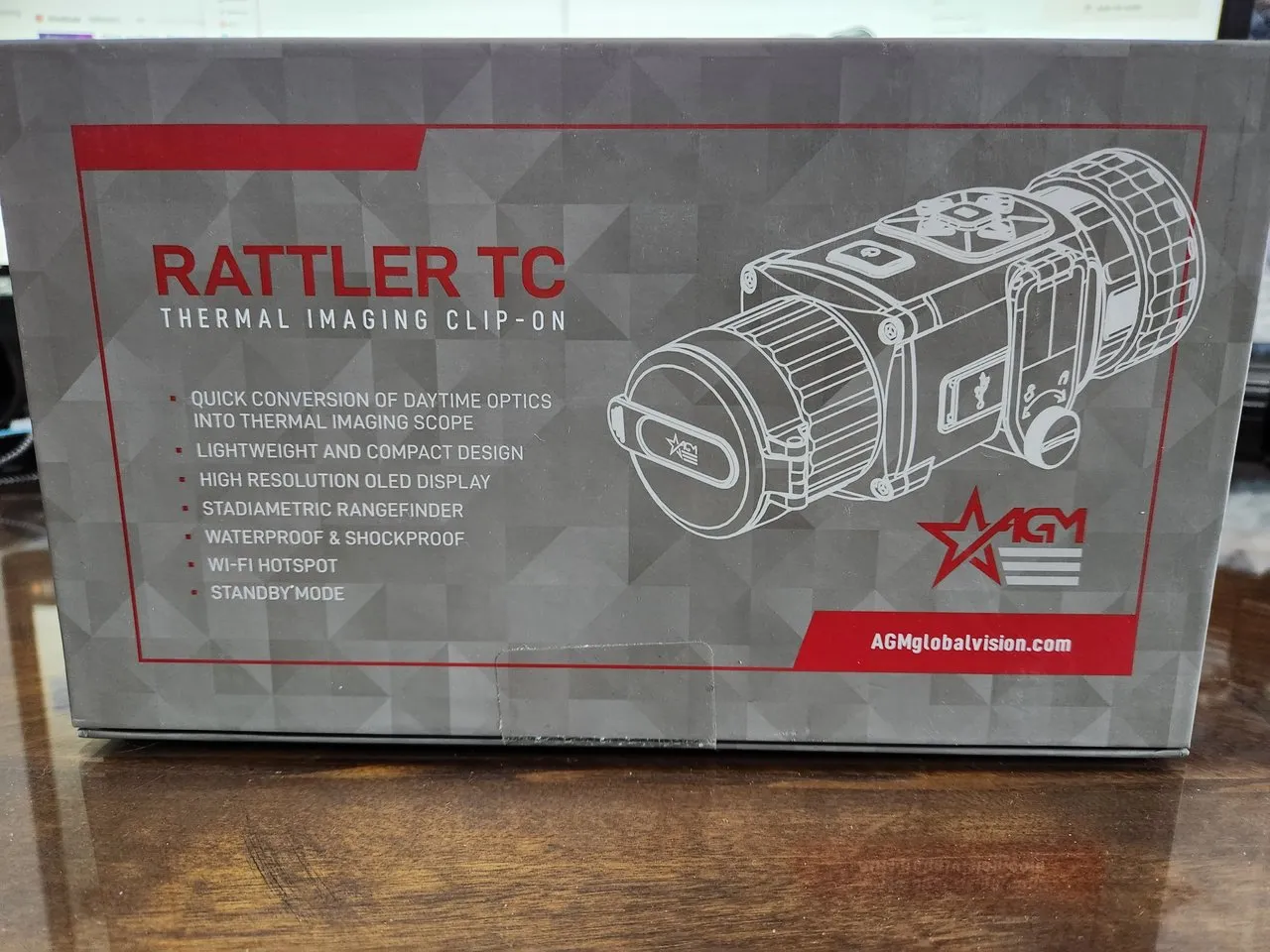
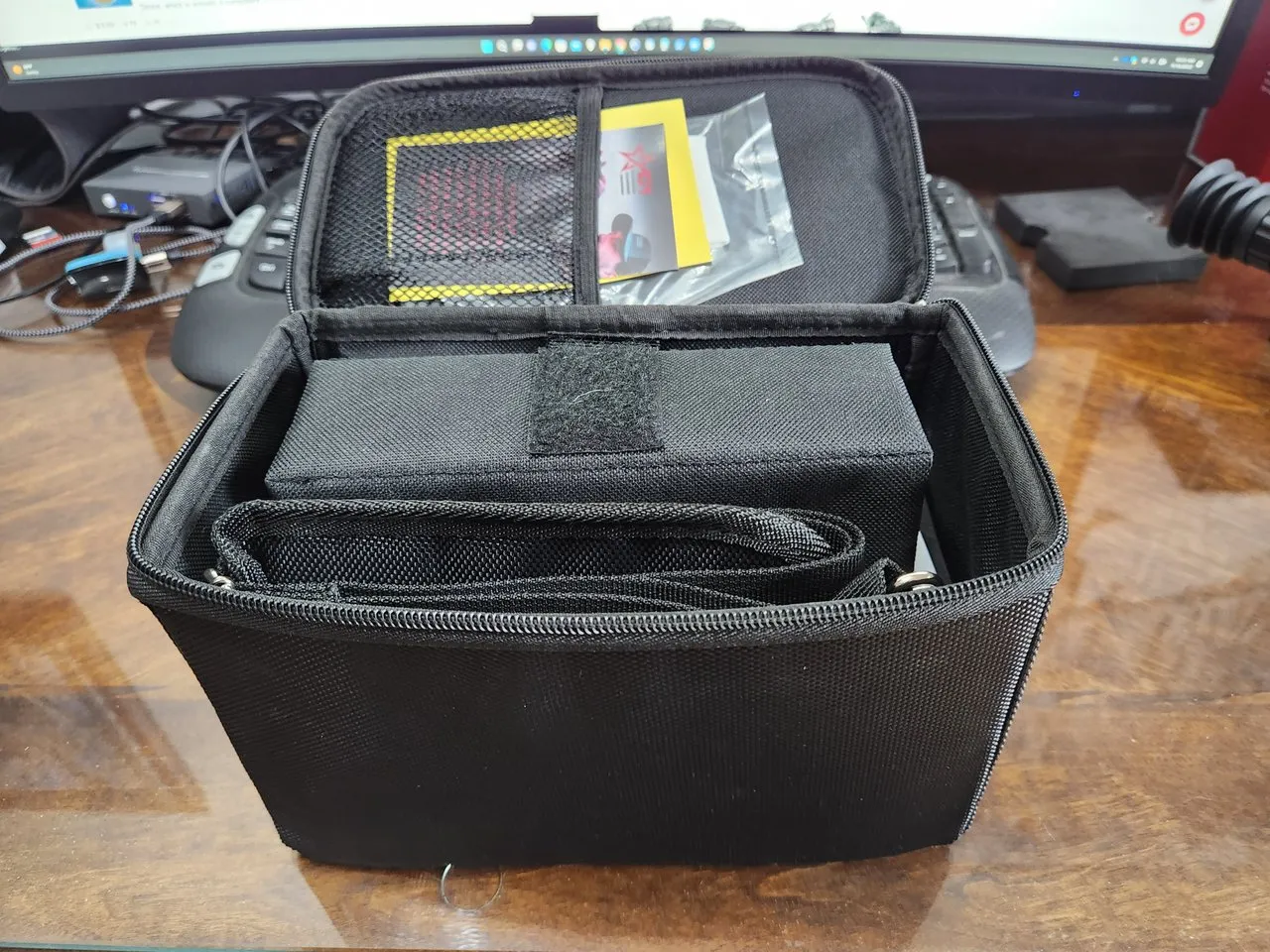
Common Myths -
Can it see through walls and windows? False - Unlike the movies, these cannot see through walls and windows, that blocks the heat signature. Warm areas like electrical sockets are often warm and can be detected, but not generally people on the other side of a normal insulated walls or drywall.
Can it see footprints? Yes, True. But with limitations, they don't last long, only until they match the surface temperature.
Do they warn the enemy? False - Unlike Night vision, which broadcasts an infrared light in order to work and can easily be traced back to their source by the enemy with night vision (and more powerful lights needed to see very far). Thermal does not broadcast any light, it reads the heat signatures generated by other sources.
The only downside so far was having to purchase the standalone eyepiece and different size scope adapters as additional cost items. Would have been nice for them to bundle a few of them like some other vendors do.
Would I do it again? Yes. Although I would maybe hold out for that next model up at 640 resolution (just because).
